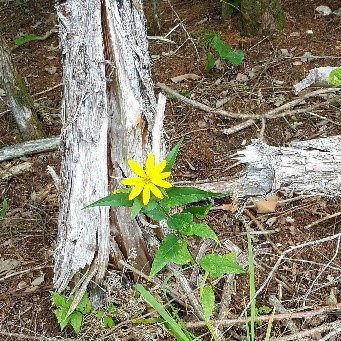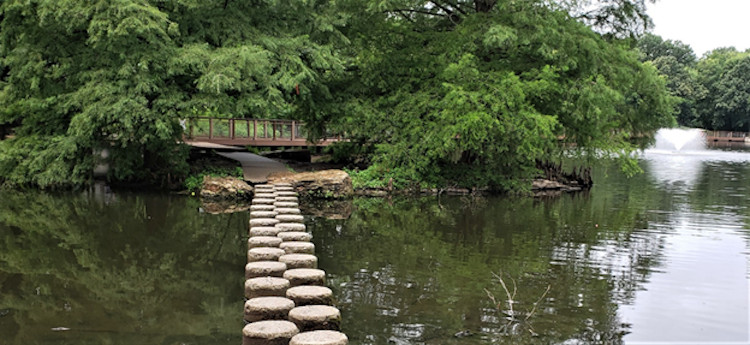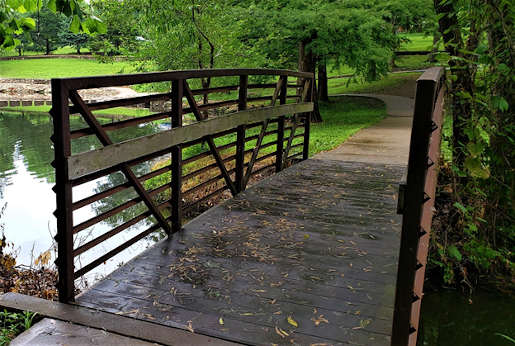Eyes and Heart Wide Open: The Practice of Contemplative Photography

By Kathy Keary
For years I have captured the beauty of nature on my camera. As I look through my photos, I see breathtaking sunsets, the vastness of oceans, the immense varieties of trees, flowers, and faces, the splendor of mountains, and the density of forests.
I am particularly drawn to paths as they speak to me of our life’s journey with some portions being smooth and straight and other parts being winding and rocky and perhaps others a bit hilly and treacherous.

I am also intrigued by opposites. One of my favorite photos is of a flower humbly positioned next to a dead tree stump. The contrast between death and new life is striking. It speaks to me of the resurrection that is often born out of a tragedy or crisis. It speaks to me of hope.
I intuitively grasped that I was encountering the sacred as I clicked here and there to capture the beauty of God’s creation. I really did not consider it prayer though until I attended a contemplative photography retreat. It was then that my appreciation for this type of contemplative practice flourished. In the words of James Finley in his book, The Contemplative Heart:
A contemplative practice is any act, habitually entered into with your whole heart, as a way of awakening, deepening, and sustaining a contemplative experience of the inherent holiness of the present moment. … The critical factor is not so much what the practice is in its externals as the extent to which the practice incarnates an utterly sincere stance of awakening and surrendering to the Godly nature of the present moment.
It is key to empty ourselves before we engage in contemplative practices so that we are open to receive whatever God has in store for us in that moment. That is why silence is typically intertwined in contemplative practices. As we still ourselves, we can let go of not only our ego but also the many distractions that can plague our minds. Our own agenda can be set aside making room for divine presence.
I intuitively grasped that I was encountering the sacred as I clicked [my camera] here and there to capture the beauty of God’s creation. I really did not consider [photography] prayer though until I attended a contemplative photography retreat.
Contemplation is all about being open to receive the fullness of grace in whatever way it presents itself. As Eckhart Tolle explains in The Power of Now:
Presence is needed to become aware of the beauty, the majesty, the sacredness of nature. … You have to put down for a moment your personal baggage of problems, of past and future, as well as all your knowledge; otherwise you will see but not see, hear but not hear. Your total presence is required.
The only camera I own is my phone, so that is what I use. Others may choose to use more sophisticated camera equipment.

Allow the Spirit to guide your experience. Wherever the Spirit leads you is the best place to engage in contemplative photography. That could be a zoo, a garden, a park, the arboretum, the country or even your own backyard or kitchen. As we learned when we were quite small but perhaps lost track of: God is everywhere. As expressed by Christine Valters Paintner in her book, Eyes of the Heart,
The graced eye can glimpse beauty everywhere, seeing the divine at work in the hidden depths of things. … The eye of aesthetic spirituality sees more than other eyes. Art in general and photography in particular, helps to facilitate this awakening by granting us epiphanies through its transfigurations of the ordinary.
As you stroll along, pay attention to the details of your surroundings. Be present to everything: the sights, the fragrances, the sounds, and the breeze touching your skin. Don’t just look with your eyes but behold your world with your heart. Gaze upon that which is capturing your attention. How is the divine being revealed? What is the message contained in that which has captured you? How are you being touched? Identify the feelings that are evoked by this experience. Perhaps you will be moved to memorialize the moment by taking a picture.
Then continue with eyes and heart wide open on the lookout for the next moment when once again you become enthralled with something in your environment. You may be moved to only take a single picture or you may find yourself taking many. Conclude your sightseeing tour by giving thanks for all the ways that God was revealed to you.

I refer you to my prior article on Visio Divina contained in this series, “An Invitation to Something New.” Your photographs will be wonderful artwork for meditative reflection. Your prayer continues as you allow each picture to speak to your soul. Is there a broader message that reveals itself as you explore all of the photos taken on a particular day or perhaps over time?
The icing on the cake is that the practice of contemplative photography increases the likelihood that we will notice and be awed by the divine in our everyday life on a regular basis. All of life becomes an opportunity to be touched by our Creator. Celtic spirituality holds that there is only a thin veil between heaven and earth. In contemplative photography, that veil is lifted and a manifestation of the Holy One is made visible.
Note: New articles in this series will be posted to the website every Monday and Wednesday. Full series can be found here: An Invitation to Something New: The Contemplative Life. On Thursday’s we’ll send an email to remind you of the articles.
[Kathy Keary, a Precious Blood Companion and spiritual director, holds a master’s degree in theological studies and is a graduate of the Atchison Benedictine’s Sophia Center’s Souljourners Program, an intense study of spirituality and spiritual direction. Kathy believes that the divine is present and active in all of life and encourages others to be awakened to the God in all including the divine within. She enjoys accompanying others on their journey to wholeness discovering the person they were created to be.]
Related

Ties That Bind
By Fr. Garry Richmeier, C.PP.S.
We pride ourselves on being independent, self-made, with a “pull yourself up by your bootstraps” mentality. But we sometimes give in to the “group think,” attaching ourselves to a group, a religion, a philosophy and blindly follow the herd. Finding middle ground between these extremes is necessary for a satisfying, productive life.

Introduction to Buddhist Meditation
This is a recording of “Introduction to Buddhist Meditation” presented by Lama Matthew Palden Gocha at Precious Blood Renewal Center in Liberty, Missouri, on Nov. 6, 2025, as part of our Teach Us to Pray series.
Categories
Assembling God's Puzzle Coffee with Padre Cooking & Spirituality Encounters of the 4th Kind Family Matters Guided Meditations Reflections on the Eucharsitic Prayers Spiritual Resources Taize Prayers Teach Us to Pray The Contemplative Life Traveling with Pilgrims of Hope Uncategorized Videos When you need a little help
